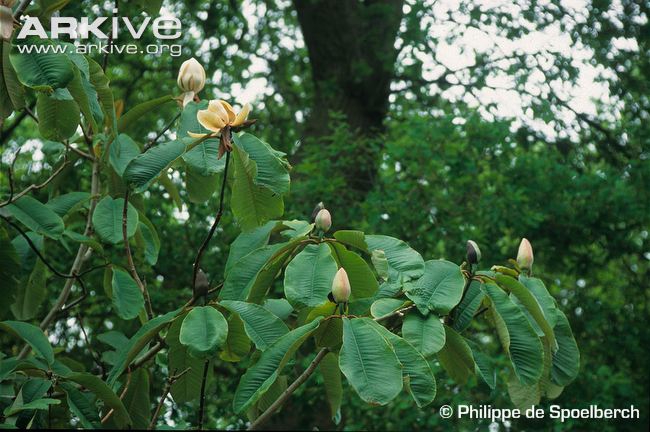| Citation |
|
Description |
Geographic Range [top]
Range Description: Magnolia rostrata is found in China within a small area encompassing western Yunnan, Mêdog County in Tibet and also occurs in northeast Myanmar. It occurs between 2,100 and 3,000 m asl. The extent of occurrence (EOO) based on specimen collections is 5,038 km2 (as calculated by Geocat) and experts believe the area of occupancy (AOO) is less than 500 km2.
Countries occurrence:
Native:
China (Tibet [or Xizang], Yunnan); Myanmar
Additional data:
? Estimated area of occupancy (AOO) - km2: 499
? Number of Locations: 4
? Lower elevation limit (metres): 2100
? Upper elevation limit (metres): 3000
Range Map: Click here to open the map viewer and explore range.
Population [top]
Population: Locations of Magnolia rostrata are scattered. There are four areas over its distribution where this species occurs indicating the population is highly fragmented.
Current Population Trend: Decreasing
Additional data:
? Continuing decline of mature individuals: Yes
? Extreme fluctuations: Unknown
Habitat and Ecology [top]
Habitat and Ecology: Magnolia rostrata trees grow up to 25 metres tall in montane forests.
Systems: Terrestrial
Use and Trade [top]
Use and Trade: Magnolia rostrata is grown as an ornamental tree and is used medicinally. The uses for the bark are unclear but the tree is exploited for this.
Threats [top]
Major Threat(s): Overexploitation and detrimental harvesting of the bark are believed to have caused significant population declines of Magnolia rostrata.
Conservation Actions [top]
Conservation Actions: There are no known conservation actions for Magnolia rostrata and it is absent from ex situ collections.
Citation: Khela, S. 2014. Magnolia rostrata. The IUCN Red List of Threatened Species 2014: e.T32426A2818758. http://dx.doi.org/10.2305/IUCN.UK.2014-1.RLTS.T32426A2818758.en. Downloaded on 15 August 2016.
Disclaimer: To make use of this information, please check the .
Feedback: If you see any errors or have any questions or suggestions on what is shown on this page, please provide us with feedback so that we can correct or extend the information provided
|

